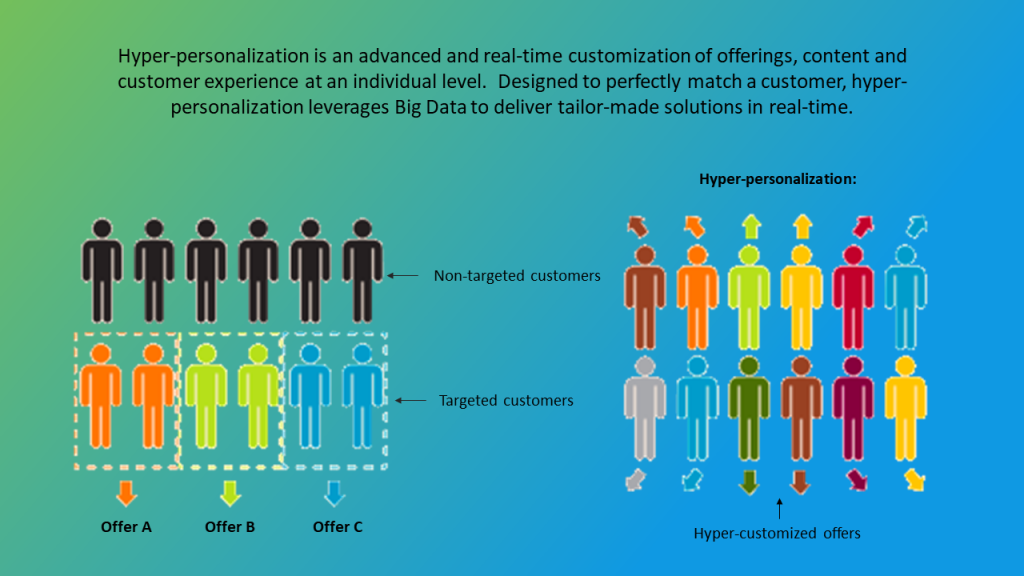Hyper-personalization is key to building brand loyalty with shoppers!
A hundred years ago, when you went into a store, the owner or manager would treat you like a person. They’d know your name, your occupation, age and even your family. They’d know your usual purchases, favourite products and even your family and finances.
Over time, levels of personalization and individual treatment have eroded or been lost completely. Today, with the power of big-data and distributed computing power, the ability to build individual relationships is back again.
At a time when marketing technology is reaching new heights, hyper-personalization in retail shopper marketing is no longer just a possibility, it’s imperative. Machine learning, artificial intelligence and biometric identification have become more integrated to use the data you already own in order to deliver a customized experience to your shoppers.

Thanks to the development of new technologies (speeded up by the current global pandemic – which has dramatically altered buying behaviours), account-based marketing (ABM) and personalization have become more practical and scalable than ever and are no longer restricted to huge online stores such as Amazon. With automation and machine learning tools working together, even a small brick and mortar store can run a comprehensive ABM operation.
Consumer benchmarks for customer satisfaction are higher than ever, with the vast majority of shoppers claiming they would go elsewhere if a retailer failed to provide an exciting and engaging experience.
The use of personalized email campaigns, cart abandonment email programs, Facebook custom audience ads, and other forms of personalized marketing strategies have begun to lose their appeal. The type of hyper-personalized marketing that all stores should be aspiring to, should leave shoppers feeling as if their minds have been read.
Marketers need to go beyond simply addressing customers by their first names in email campaigns!
 The psychology of hyper-personalization is simply that shoppers wish to be recognised as individuals. They want retailers to understand who they are and what they want, and will form deeper affinities with those who do so successfully. This includes making the path to purchase for shoppers as effortless and seamless as possible.
The psychology of hyper-personalization is simply that shoppers wish to be recognised as individuals. They want retailers to understand who they are and what they want, and will form deeper affinities with those who do so successfully. This includes making the path to purchase for shoppers as effortless and seamless as possible.
Hyper-personalization combines behavioural and real-time data from its customers. A simple example of this is a shopper browsing a website for environmentally friendly cleaning supplies with the website simultaneously recommending similar products based on their specific search history.
This process requires stores to have a deep understanding of their own products and customers, and then devise a customized marketing strategy, using the right technology and infrastructure, which is where ShopperLogiQ comes in.
Although retailers may wish to create habitual purchasing behaviours with shoppers to keep them returning to the store, research has proven that offering the same old loyalty rewards to all customers is not an effective way to do this. Despite the old adage that it takes 21 days to form a habit, in truth, it takes a lot longer – anywhere between 18 and 254 days.
Short bursts of activity may generate interest from shoppers, but certainly won’t change consumer behaviour. It takes the long-term approach of getting to know your customers and consistently offering tailored rewards and personalized promotions as part of your regular customer care to keep them coming back long enough to create the desired shopping habit.
With the use of modern technology, predictive analytics and hyper-personalization, retailers are taking a huge step forward – back to the good old days of individualized customer care.
Contact us today to find out how we can help you!


